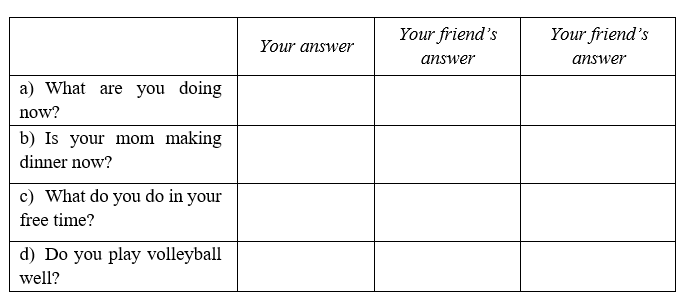AULA 07/2022 – Free time activities / Simple Present, Present Continuous and Personal Pronouns - 04/04/2022
Free time activities: What do you do in your free time?
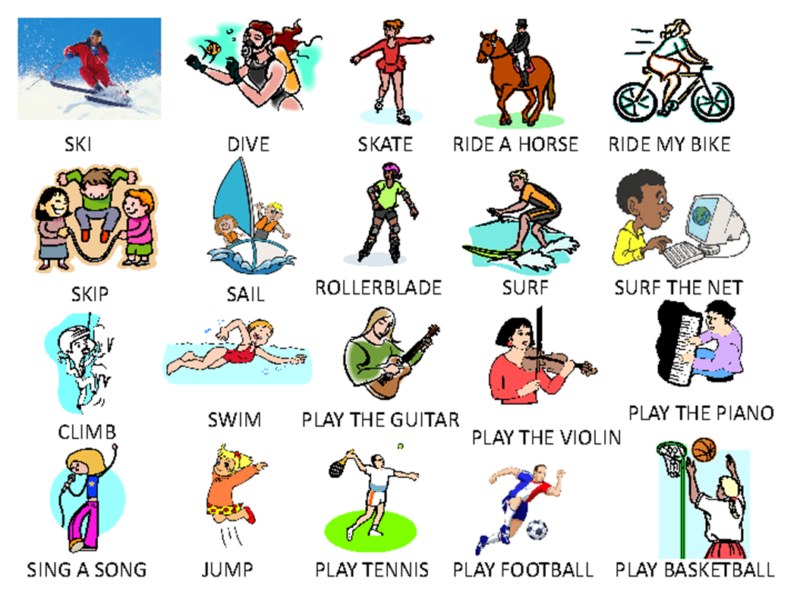
SIMPLE PRESENT
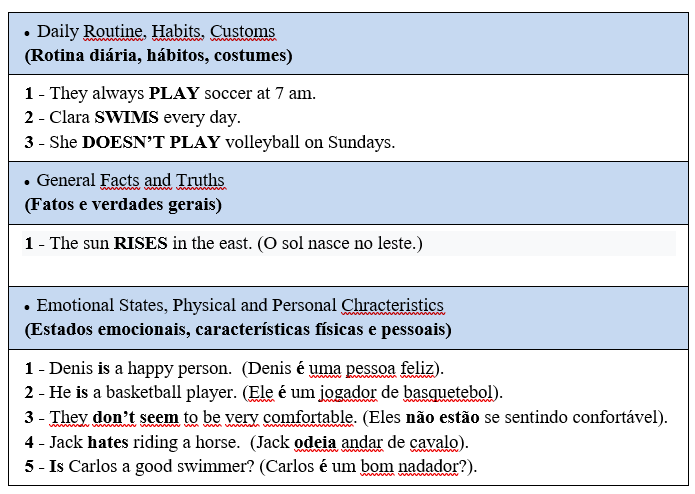
PRESENT CONTINUOUS
É usado para indicar ações que estão em progresso no presente; no momento da fala.
They are riding bikes. (Eles estão andando de bicicleta).
I am playing tennis. (Estou jogando tênis.)
Sophia is not swimming not. (Sophia não está nadando não).
Read the texts and answer the questions in your notebook. (Leia os textos e responda as atividades no seu caderno.)
Talking on the phone:
Sara: Hello, Daniel. How’ve you been?
Daniel: I am great. And you?
Sara: I am fine, thanks. I am doing my homework now. And you?
Daniel: I am studying math. What do you do in your free time?
Sara: I play volleyball. I go to the club. I visit my grandmother. And you?
Daniel: I usually swim. And on Saturdays, I play soccer with my father.
Sara: That’s great! I love riding a horse.
Daniel: I’ll call you tomorrow. My mom is asking for some help. Bye.
Sara: See you.
Vocabulary:
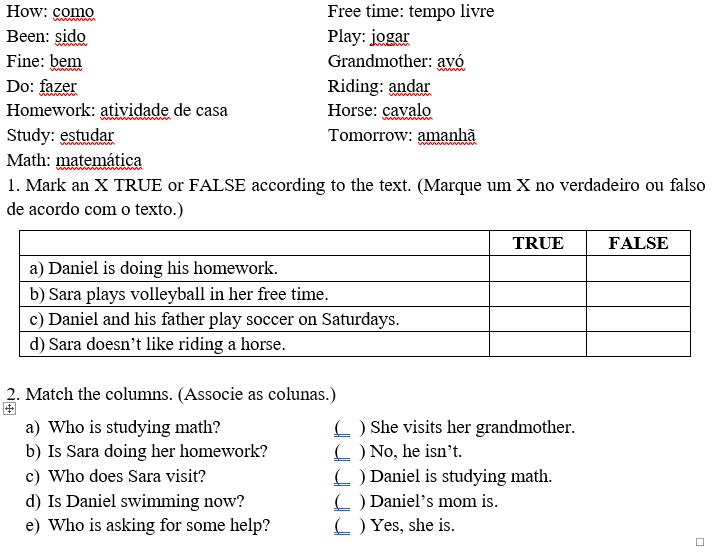
Now, we are going to know about Augusto’s daily routine. (Agora, vamos conhecer a rotina diária de Augusto.)
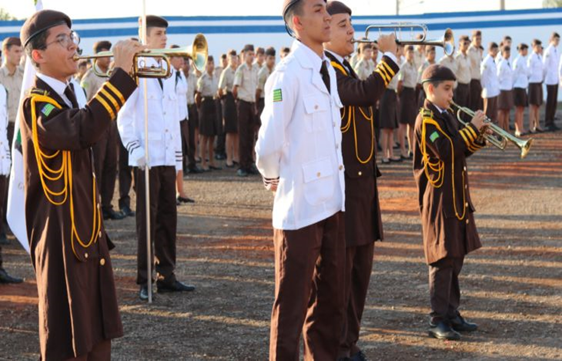
Augusto’s daily routine
Augusto is 13 years old. He lives with his family in Goiânia, the capital of Goiás. He attends a very good public school.
He is good at sports. He loves playing soccer and swimming.
He always gets up at 6 o’clock. He takes a shower at six fifteen. He has breakfast with his family. He goes to school by bike.
His classes start at 7 o’clock. In addition, he plays fanfare at school. He has lunch at midday. And, in the afternoon, he does his homework and helps his mom.
Figura Disponível em https://www.portalcepmg.com.br/2019/04/dia-estadual-em-comemoracao-ao-movimento-de-bandas-e-fanfarras/Acesso em 17 de abr. de 2020
Vocabulary:
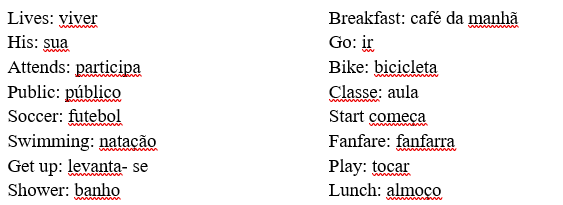
3. Answer the questions about the text.
a) Where does Augusto live?
b) What sports does he practice?
c)How does he go to school?
d) Who does he help?
4. Answer these questions and then ask your friends. Take notes in the following chart. (Responda essas perguntas e depois pergunte a seus amigos. Faça as anotações na tabela a seguir.)
